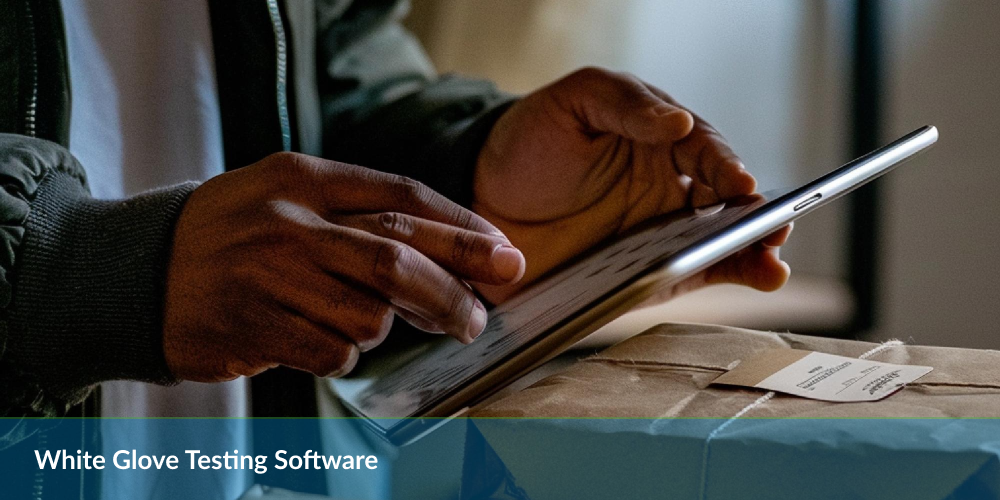Table of Contents
When precision and customization are the foundation of software quality assurance (QA), white glove testing software stands out as the gold standard. This specialized approach goes beyond traditional QA practices, emphasizing a meticulous, high-touch process tailored to each project’s needs. By ensuring a thorough and customized evaluation, white glove testing software delivers scrutiny that leaves no detail unchecked.
Through this rigorous methodology, the software undergoes an exhaustive assessment, guaranteeing exceptional quality and reliability. For developers and businesses, white glove testing software offers the assurance needed to launch products with unmatched excellence, helping them meet the highest industry standards and exceed user expectations.
The Foundations of White Glove Testing
Software Quality Assurance: The Backbone of White Glove Testing
Software Quality Assurance (SQA) lays the groundwork for white glove testing software, providing a framework for evaluating the software’s functional and non-functional aspects. SQA ensures that software meets the set standards and requirements before release. During white glove testing, experts meticulously examine every component of the software, leveraging established SQA methodologies to reinforce the software’s reliability, security, and performance.
Customized Testing Solutions: Tailoring the Process to Meet Unique Business Needs
Each white glove testing procedure is tailored to meet specific business demands, ensuring that the software operates flawlessly and delivers an unparalleled user experience. Customization involves crafted test cases and scenarios that mirror real-life user behaviors and environments, thus enabling the detection of issues that standardized tests may overlook. Businesses reap the benefits of a product that has undergone rigorous validation and is tailored to match their context and customer expectations.
Top 05 white Glove Delivery software
| Platform | Overview | Key Features |
| NetworkON | A fast-growing white-glove delivery management software designed for B2B, serving industries like home services, healthcare, retail, furniture, electronics, and food & beverage. It streamlines logistics operations with AI-driven solutions. | – AI-powered route optimization and geofencing- Scalable subscription model- Comprehensive logistics support |
| Dispatch Track | An AI-based white-glove delivery platform is optimizing large-scale last-mile logistics. It connects brands, customers, and delivery teams to manage complex operations efficiently. | – White-glove delivery management- Intelligent routing and optimization- Proof of delivery- 3PL management |
| FarEye | An Intelligent Delivery Orchestration Platform known for optimizing white-glove delivery, increasing on-time deliveries, and enhancing customer engagement. | – Cross-docking management- Real-time driver tracking- Routing and dispatch optimization- Reverse logistics and billing |
| Bringg | A customer-centric white-glove delivery solution for enterprises, offering specialized logistics services, including relocation support through a robust technology platform. | – Route optimization and planning- Android and iOS apps- Real-time tracking of delivery teams- Order tracking and history |
| Shipsy | A SaaS-based white-glove delivery management platform that automates operations increases first-attempt deliveries and enhances customer satisfaction. | – Automatic dispatch and order management- Real-time tracking- Barcode reading for billing- Route planning and fleet management |
Diving Deeper into the White Glove Process
Step-by-Step Walkthrough of the White Glove Testing Process
A meticulous approach defines white glove testing software. The first phase involves a comprehensive analysis of the software specifications to ensure testers are well-versed with the expected outcomes. Next, a detailed test plan outlines each step to examine the software’s functionality, performance, and security. Custom test cases are then developed to mimic end-user interactions with the software.
Following this, testers manually execute these tests precisely, documenting any discrepancies from the expected behavior. The findings guide developers to make necessary adjustments. Finally, a retest confirms that all issues have been resolved and the software performs as intended.
Incorporating User Experience (UX) Testing for Enhanced End-User Satisfaction
In white glove testing software, UX testing is not merely a checkpoint but integrated throughout the testing cycle. By closely observing how users interact with the software, testers can provide feedback on the seamless integration of features, intuitiveness of the interface, and overall satisfaction. This feedback often culminates in refinements that significantly elevate the user’s interaction with the finished product.
Importance of End-to-End Testing in the White Glove Approach
Treating software as a component of a larger ecosystem necessitates end-to-end testing. This process verifies that each software element operates in concert with various systems, databases, and networks. Consequently, it ensures a frictionless user experience across all touchpoints. End-to-end testing in the white glove approach mitigates the risk of failures in live environments by preemptively addressing issues that could disrupt the operational flow of the software within its intended context.
Meeting and Exceeding Standards
White glove testing software engenders advanced adherence to quality control standards for software deployment. Software products undergo meticulous inspections, ensuring every feature operates as intended. Peer reviews and automated checks collaborate to validate the application’s stability and functionality.
Quality Control Standards for Software Deployment in White Glove Services
By integrating a stringent feedback loop involving manual assessments and automated scans, stakeholders maintain a high bar for software quality. The adoption of Continuous Integration and Continuous Deployment (CI/CD) practices enables a sequence of rigorous testing at each developmental stage. Integration with prominent quality assurance protocols aligns white glove testing processes with industry benchmarks such as ISO/IEC 25010, which delineates system and software product quality criteria.
Ensuring Data Security and Compliance in the Testing Process
Data security becomes part of quality assurance as testers safeguard confidential information during testing. Compliance with regulations such as the General Data Protection Regulation (GDPR) and the Health Insurance Portability and Accountability Act (HIPAA) is non-negotiable. A combination of encryption and secure testing environments ensures that data vulnerabilities are assessed and mitigated.
Adopting Client-Centric Service Models for Maximum Value
A client-centric service model underscores the essence of white glove testing services. Customizable testing frameworks resonate with the unique requirements of different clients, establishing a collaborative rapport. Close communication channels allow for immediate feedback and bespoke configurations, translating to software solutions that serve the precise needs of the end-user with remarkable efficacy.
Pro Tip: Align white glove testing with industry standards like ISO/IEC 25010 and prioritize client-centric, secure, and compliant processes for maximum quality and value in software deployment.
Addressing the Dichotomy
White glove testing software presents an opportunity to balance the precision of automated testing with the insightfulness of manual examinations. Recognizing the ideal moments to deploy each method maximizes effectiveness.
Manual vs Automated Testing: Finding the Right Balance in White Glove Testing
Automated testing harnesses algorithms and software tools to execute predefined test cases, ensuring consistency and expediency in results. With automation, repetitive but necessary tasks undergo thorough testing without exhaustive human intervention. Conversely, manual testing relies on the nuanced judgment of experts whose qualitative assessments can identify issues that transcend the binary scope of automated solutions.
Evaluating When to Utilize Each Method for Optimal Results
Deciding between manual and automated testing hinges on specific criteria. For instance, automation can be used for regression, load, and performance testing to swiftly process tasks that would otherwise be too time-consuming. Conversely, manual testing becomes preferable for exploratory, usability, and ad-hoc testing, where human creativity and experience uncover hidden flaws. Combine these approaches under the white glove umbrella for a comprehensive quality assurance process that embodies thoroughness and efficiency.
- Automated tests excel in detecting known, predictable issues, allowing testers to focus on more complex tests.
- Through manual methods, human testers adeptly explore user-friendliness and the overall experience of the software.
Integrations and Environment Considerations for White Glove Testing
Seamless Compatibility With Continuous Delivery/Continuous Integration (CD/CI) pipelines enables realenablesdetection and correction of issues during White Glove Testing. Effective integration into these workflows empowers development teams to iterate quicker and with higher-quality outputs.
Advantages of On-Premise and Cloud-Based Testing Environments in White Glove Testing
| On-Premise Testing | Cloud-Based Testing |
| Precise control over testing infrastructure | Easy scalability to match project needs |
| Enhanced security with no public internet exposure | Cost-efficient pay-as-you-go pricing |
| High customization for a tailored ecosystem | Remote access for better team collaboration |
Analyze the requirements of the specific software and underlying architecture before deciding. Review the data security mandates, potential risk factors, and operational efficiency to ascertain the optimal testing environment. Acknowledge the uniqueness of each project — where one may profit from the stringent security of an on-premise environment; another could thrive utilizing the agility of a cloud-based setup.
Pro Tip: Choose the testing environment—on-premise for maximum control or cloud-based for flexibility—based on your project’s security needs, scalability, and collaboration requirements.
Beyond the Launch
Release into the market does not conclude the role of white glove testing software. Monitoring and support post-deployment sustain software quality. Updates, patches, and enhancements rely on continuous input from the testing phase, ensuring products adapt effectively to users’ evolving requirements and technological advancements.
White glove testing offers a framework for perpetual improvement. Metrics and performance indicators gleaned from the software’s operation guide developers in refining functionalities. This data-driven approach facilitates prioritizing product updates, addressing usability issues, and optimizing for future iterations. Regular assessments against these measures establish a cycle of quality enhancement that benefits all stakeholders.
- Customer feedback loops integrate user perspectives into development.
- Data analytics inform strategic decisions with actionable insights.
- Adaptive maintenance strategies protect the long-term investment in the software.
Through the diligent application of white glove testing protocols, software products achieve and maintain the pinnacle of performance and user satisfaction.
Looking Ahead: Transformations in Software Testing
Software testing continuously evolves. Recent advancements in artificial intelligence and machine learning are on course to redefine testing protocols, including white glove services. Automation powered by these technologies is expected to handle increasingly complex tasks, facilitating the detection of bugs and quality assurance, especially where intricate systems and vast volumes of data are involved.
Continuous integration and deployment (CI/CD) practices will be incorporated into white-glove testing scenarios. The agility afforded by CI/CD allows for rapid adjustments and improvements, promoting a more dynamic and successful product evolution. These methodologies turn what was once a static testing phase into an ongoing refinement process.
Preparation for these shifts in software testing demands that organizations stay abreast of emerging tools and processes. Teams may need to acquire new skills or refine existing competencies to effectively harness the full potential of upcoming technologies and practices. Adapting to these changes early may yield a substantial competitive advantage, ensuring that quality remains steadfast regardless of the complexity or pace of software development.
White Glove Testing in Action
Businesses integrating white glove testing observe a transformation in their approach to software quality. Management strategies refine, focusing on preemptive measures and meticulous attention to detail. Best practices emerge, heralding structured processes and dedicated resources.
Experiences with White Glove Testing: Management Strategies and Best Practices
Companies that adopt white glove testing methodologies often develop a keen eye for strategic planning. A prime management strategy includes detailed test plan development that guides teams through complex testing scenarios. This involves outlining responsibilities, timelines, and expected outcomes. Regular communication between testers, developers, and stakeholders fosters a collaborative environment conducive to high-quality outcomes.
- Stress on the early involvement of testers leads to identifying and resolving issues before they escalate.
- Continuous improvement cycles ensure the white glove testing process remains relevant and effective.
- Developing a culture of quality across the organization encourages everyone to strive for excellence.
Businesses also emphasize the importance of selecting the right tools for white glove testing. These tools must offer thorough coverage, ease of use, and the ability to integrate with other systems within the software development lifecycle.
How White Glove Testing Transforms Businesses’ Approach to Software Quality
White glove testing software goes beyond routine quality assurance. By treating every aspect of the software as critical, businesses elevate the standard of their end products. Clients notice the difference in the software’s stability, usability, and performance. The front-line benefits include fewer customer complaints, reduced support costs, and greater customer satisfaction.
Another notable transformation is in the data-driven decision-making process. White glove testing generates detailed reports and analytics, allowing businesses to pinpoint where improvements are necessary. The rigorous testing process also prepares teams for regulatory compliance, as thorough examination uncovers potential issues before they become compliance risks.
As a result, executive leadership often witnesses increased market competitiveness due to their software offerings’ reliability and exemplary performance. A reputation for delivering superior software products can become a defining trait of a company that utilizes white-glove testing practices. Ultimately, the investment in white glove testing translates into tangible business value and a discernible competitive edge.
Key Takeaways
White Glove Testing Software Prioritizes Customization
Unlike traditional QA, white glove testing focuses on meticulous and tailored evaluations, ensuring the software meets precise business needs while delivering exceptional quality and reliability.
Manual and Automated Testing for Optimal Results
White glove testing balances the precision of automated testing with the insightfulness of manual examinations, ensuring comprehensive coverage and higher effectiveness.
End-to-End Testing for Seamless User Experience
End-to-end testing ensures compatibility across different systems and networks by treating software as part of a larger ecosystem, mitigating potential risks in live environments.
Continuous Improvement Through Feedback and Metrics
White glove testing supports ongoing improvements even post-launch, leveraging feedback loops and data analytics to refine and adapt the software to evolving user needs.
Client-Centric and Compliant Approach
White glove testing adopts a client-centric, secure, and compliant framework, integrating industry standards like ISO/IEC 25010 to align with quality benchmarks and regulatory requirements.
Wrapping It Up!
White glove testing software solidifies the assurance of exceptional quality in software. As the overview of its intricate processes illustrates, meticulous attention to detail defines the caliber of services and products white glove testing brings forth. By embracing this rigorous approach, businesses meet and often surpass their expected standards.
The transformative power of white glove testing software extends far beyond launch day. Continuous integration into software ecosystems ensures that products remain robust and functional against a constantly evolving digital landscape. As a result, the software lifecycle is dramatically extended through regular maintenance and updates, a testament to the white glove service model’s commitment to excellence.
Moreover, the ripple effects of adopting white glove testing software ripple through various facets of the industry, uplifting the standard of software deployment. This heightened benchmark influences peers and competitors, fostering an environment where exquisite craftsmanship becomes the norm and substandard quality is no longer tolerable.
Engage with the conversation, explore how white glove testing can elevate your business with NetworkON, and discover tailor-made testing solutions that align with your unique needs today.
Frequently Asked Questions
What is white glove testing software?
White glove testing software is a specialized quality assurance process that focuses on high-touch, customized testing. It ensures careful software evaluation to meet specific business needs and industry standards.
How does white glove testing differ from traditional software testing?
Traditional testing often uses standardized methods, while white glove testing provides tailored solutions. It blends manual and automated testing to examine the software’s functional and non-functional aspects thoroughly.
Why is end-to-end testing important in white glove testing?
End-to-end testing ensures software integrates seamlessly with other systems and networks, preventing disruptions and enhancing the overall user experience across all touchpoints.
Can white glove testing be applied to cloud-based environments?
Yes, white glove testing can be executed in both on-premise and cloud-based environments, with the cloud offering flexibility, scalability, and cost-efficiency, depending on the specific project needs.





0 Conversations